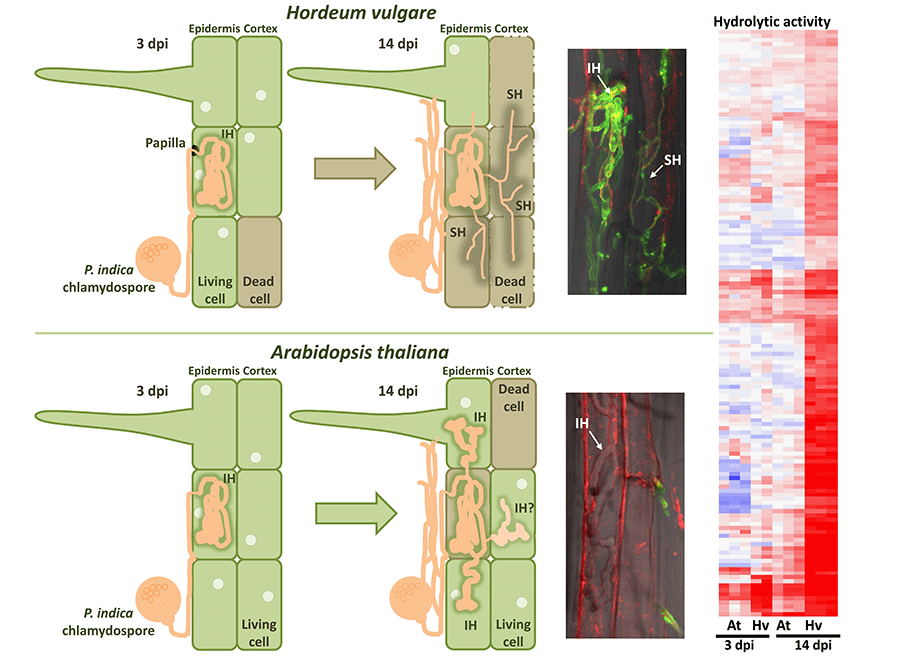Prof. Dr. Alga Zuccaro
Research focus
Currently my research is focused on the mechanisms that enable symbiotic fungi to colonize plants successfully and on the processes accounting for variations in host preferences and fungal lifestyles, especially in mutualistic root endophytes. With respect to insights into how symbiotic fungi establish themselves in metabolically active root cells and how the plants are reprogrammed for enhanced performance, in my group we routinely use integrated approaches that rely on the combination of reverse genetics, transcriptomics, cell biology, biochemistry, and comparative genomics. We propose to analyze the genetics and cell biology of the root endophyte Piriformospora indica, and the closely related orchid mycorrhizal fungus Sebacina vermiferain their symbioses with the model plants barley (monocot) and Arabidopsis (dicot) and to understand the evolutionary mechanisms involved in the establishment of biotrophy. Primary interest is to find answers to the following questions:
- Which mechanisms allow root endophytes to suppress host defense in a wide range of unrelated plants? Does P. indica and S. vermifera use effector-like molecules in the form of small secreted proteins in order to manipulate different host plants and/or are there other mechanisms like shielding itself in place?
- Which signals mediate the switch from the biotrophic to the cell death associated phase? And is this latter phase actively triggered by the fungus?
- What are the basic events involved in the transition from saprotrophic to symbiotic lifestyles?
The five most important publications
- Sarkar D, Rövenich H, Jeena G, Nizam S, Tissier A, Balcke GU, Mahdi LK, Bonkowski M, Langen G, Zuccaro A (2019) The inconspicuous gatekeeper: endophytic Serendipita vermifera acts as extended plant protection barrier in the rhizosphere. New Phytol 224(2):886-901. doi: 10.1111/nph.15904.
- Wawra S, Fesel P, Widmer H, Leson L, Langen G, Zuccaro A (2016) The fungal-specific ß-glucan binding lectin FGB1 alters cell wall composition and prevents glucan-triggered immunity in plants. Nat Commun. doi: 10.1038/ncomms13188.
- Kohler A, Kuo A, Nagy LG, Morin E, Barry KW, Buscot F, Canback B, Choi C, Cichocki N, Clum A, et al. (2015) Convergent losses of decay mechanisms and rapid turnover of symbiosis genes in mycorrhizal mutualists. Nature Genetics 47(4): 410-U176
- Lahrmann U, Strehmel N, Langen G, Frerigmann H, Leson L, Ding Y, Scheel D, Herklotz S, Hilbert M, Zuccaro A (2015) Mutualistic root endophytism is not associated with the reduction of saprotrophic traits and requires a noncompromised plant innate immunity. New Phytol 207(3):841-857.

